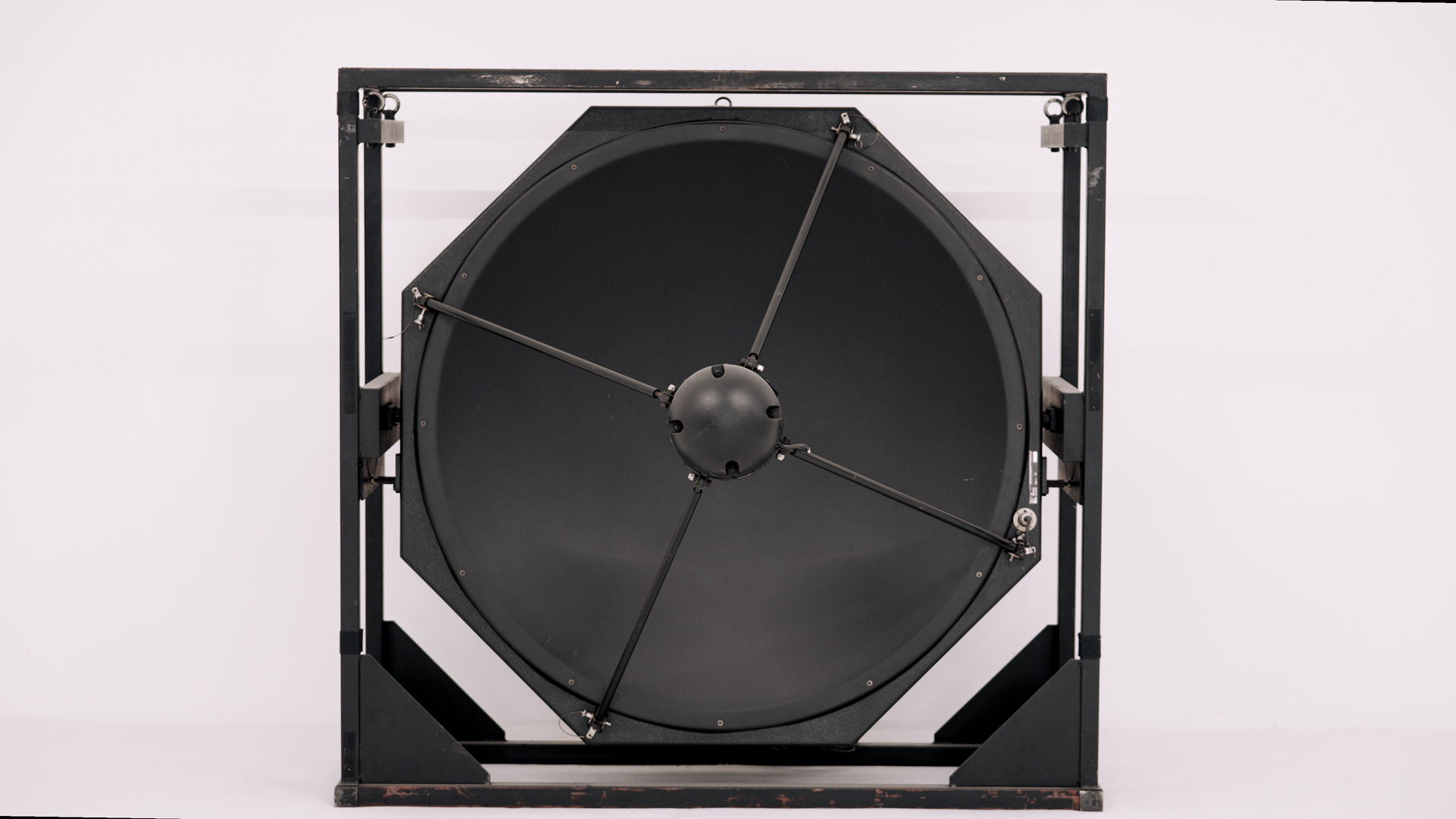A [continuum] is an updated iteration of Ryoji Ikeda’s very first sound installation, a sonic exploration of the concert pitch, A.
To close out his Fact Residency, Ryoji Ikeda takes us back to his very first solo installation. Back in 2000 the artist debuted at the Hayward Gallery as part of Sonic Boom, a group show curated by sound artist and theorist David Toop that featured work from Brian Eno, Pan Sonic and Sonic Youth’s Lee Ranaldo. The work he showed, A, was a precursor to the immersive, sculptural version of the work he will present at his current show at 180 Studios, fittingly titled A [continuum]. At that time, Ikeda lacked the confidence to present himself as the interdisciplinary artist he is today and admits being too shy to explain to Toop the full scientific and historical scope of the affectingly simple installation, a sonic exploration of the concert pitch, A. Installing six speakers on the walls of a corridor in the gallery, Ikeda projected a variety of sine waves at the exhibition’s attendees, tones that, unbeknownst to Toop, were tuned to differing frequencies of A.
The work is a response to the historical variety of concert pitch over the past few hundred years. “During the ’70s the International Organisation for Standardisation fixed that A equals 440 Hz, but even contemporary orchestras never follow this,” explains Ikeda. He uses the example of two legendary tuning forks, which are also pitched at A, that of George Frideric Handel, which in 1751 was tuned at 422.5 Hz, and a tuning fork used by Steinway & Sons to tune pianos in London in 1879, which was tuned at 454.7 Hz. This variation inspired Ikeda to start collecting different pitches of A in classical contexts, a collection that now numbers into the hundreds. From these varying pitches of A, Ikeda selected six frequencies to be emitted as sine waves simultaneously. The result is a sound field that shifts as you move around within it, the superposition of different frequencies creating unique interference tones, resulting in what the artist describes as “invisible patterns of very complex sound fabrics and resonances.”



21 years later this simple sound work returns to London under a different guise. Assembling six towering Meyer Sound SB-1 Parabolic Sound Beam speakers, designed to throw low-distortion sound to the back rows of sprawling stadiums and themselves sculptural objects in their own right, Ikeda scales up the concept for A [continuum], the most fully realised iteration of the work. Moving between the speakers, competing frequencies wash over each other, flowing into each other to envelop the listener in an all-consuming sound bath. However, it is the ominous presence of the speakers themselves, which bear a passing resemblance to sonic weaponry such as the LRAD (Long Range Acoustic Device), or sound cannon, used for crowd control, that completes the work in its developed form. Of their retro design, Ikeda admits, “[Meyer Sound] still produce a similar one, but it’s more hi-tech, it’s not that interesting looking. Of course the function of their directional character is very important, but it’s such a photogenic object!”
Bringing the concept full circle, Ikeda applies this sound overlap at various moments throughout the exhibition, a unique effect of the staging and curation of the show. “In the group show, managing sound bleed can be very difficult,” he explains, “but in a solo show it’s nice to have a mix of soundscapes that you can hear at the same time. It’s a fantastic opportunity. I can even recompose soundtracks of different works so they work better together.” In this way the pure tones of a [continuum] provide the sonic bedrock for the ambient hum of point of no return, the orchestral bleeps of data-verse and the blistering noise of test pattern, each work a principal player in a single expansive orchestration.



A [continuum] features as part of Ryoji Ikeda’s show at 180 Studios, 180 The Strand. Produced and curated by The Vinyl Factory and Fact in collaboration with Audemars Piguet Contemporary, the exhibition follows five years of collaboration between Ryoji Ikeda and The Vinyl Factory, which includes the UK premieres of Ikeda’s supersymmetry in 2015 and test pattern [N°12] in 2017, as well as several vinyl albums and new commissions. The exhibition presents 12 large-scale, multimedia works, six of which are premiering on the global stage, and five of which are showing for the first time in the UK.



The show is open now and will run until September 18. Tickets are available now at the 180 The Strand website. For more information about Ryoji Ikeda and his work, you can visit his website and follow him on Instagram.
Directed and filmed by Pedro S. Küster
Additional Cinematography by Laima Leyton
Watch next: Ryoji Ikeda Presents – data-verse




